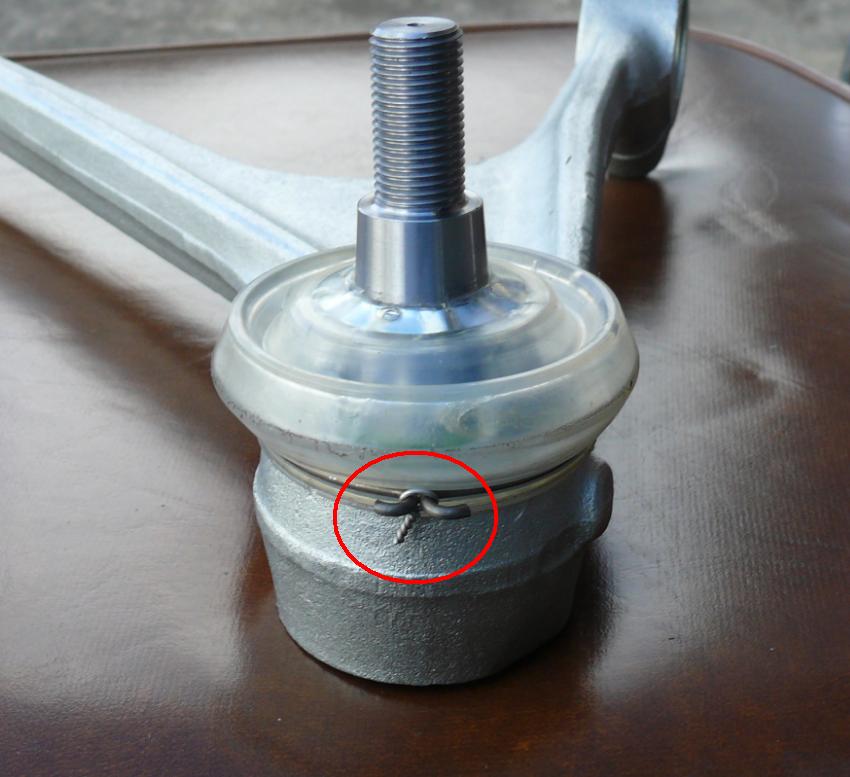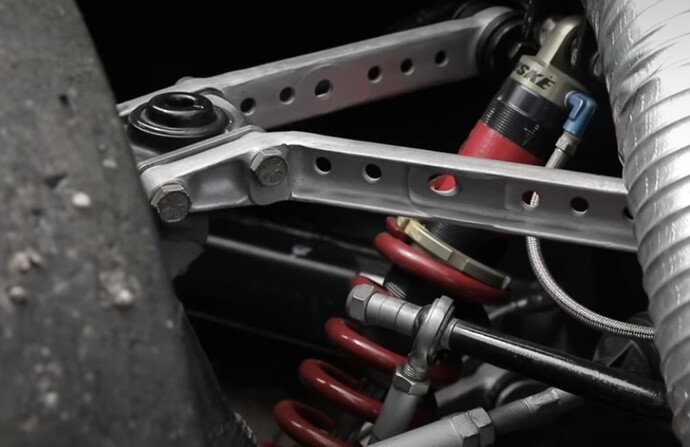I just received a pair of SNGs upper front control arms with the ‘modern’ polymer ball joint socket installed. These arms have a fine sand cast appearance, but it may just be down to aggressive media blasting before plating. I had believed that the original arms were forged, and my original arms appear to be so. So can someone point me to a definitive info source on the method of manufacturing? I’m not too keen on installing cast pieces if the factory parts were forged. I have an inquiry into SNG also, btw.
The originals were indeed foraged, and you can see evidence along the edges of the arm itself: it’s quite indicative of a forging.
Yeah, well these look more like a cast copy of a forged part. ‘Forging’ raised lines are there, but the typical grinding marks on those raised areas has the same fine sand cast appearance.
Hi Steve,
As Paul states, the originals were definitely forged. Additionally, I can tell you that the surface of the Socket for the Ball Pin is induction surface hardened to a depth of 0.03" minimum to 0.05" maximum, at a hardness of 650VPN (circa 58RHC). The material used in the manufacture is a through hardening carbon steel, hence the reason for induction hardening to achieve a very hard wear surface, but not through hardening that would result in a very brittle area. For the quantity of After Market upper wishbones that I suspect are sold annually, it would be an expensive exercise manufacturing forge tooling compared to casting.
Bill Angel used to reclaim badly worn wishbones by building up the worn surface using welding rod material the same as the substrate, machining the area to original specification and correctly induction surface hardening the area pursuant to original specifications; a specific custom made heating coil was manufactured for the purpose of induction hardening.
He now also reclaims worn units by machining the original wishbone to accept the Nylon Insert type Ball Joint assembly. The following pictures shows a wishbone after machining, ready to install the ball joint assembly and of the Ball Joint System installed. In this case it was for an early S1 car with the grease nipple on the side, complete with A & A machined Top Caps.
Brent
Maybe post a few pictures?
What is the downside of a cast control arm? When i replaced the ball jolnts i ended up using all the old and new shims to take up all the play.
If indeed it is cast, it’s not nearly as strong as a forged item.
And it will probably fracture much, much more easily instead of bending first?
Hi Steve,
Using shims is not a panacea for a badly worn Ball Pin Socket and is only acceptable if the wear is even (seldom is) and a uniform resistance to moving the Ball Pin through its full motion can be achieved.
In both cast and forged parts, the grain structure of the component follows the shape of the part, but with a forging the grain structure is refined and inherently stronger than a cast component.
There is not a great deal of load applied to the upper wishbone and a good steel casting would be quite acceptable.
Brent
I would tend to agree….makes me think of this pic I saw the other day of the 1981, LeMans class-winning Ferrari.
Check out those spindly upper arms….200+mph, with big sticky slicks.
Are those arms cast? Hard to tell, but look forged, to me.
Probably forged, but not much cross-section to them. Significant bend in the load-path of the one with no gusseting whatsoever.
Lightening holes appear to be drilled by hand….aren’t evenly spaced, or even aligned.
That’s why they are a half I-beam: the cross-section of a I-beam in the direction of force that the upper arm takes is extremely strong.
I knew that amount of shims would be a temporary fix. The resistance was pretty uniform (before driving it) i haven’t checked after. I was looking at replacing with the SNG control arms.



